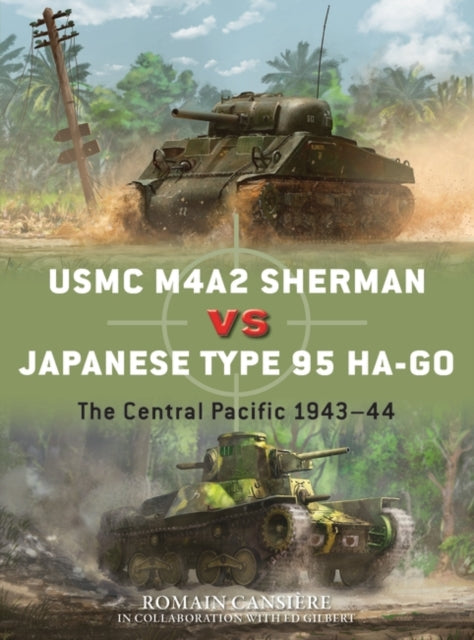USMC M4A2 Sherman vs Japanese Type 95 Ha-Go
Usually shipped within 24 hours
UK deliveries from £5.95
Delivery & Returns
Delivery & Returns
We use the Royal Mail, DHL Express or UPS for our customers. For UK addresses, deliveries under 10kg are a standard £4.95 via Royal Mail Tracked 48 Service. For orders over 10kg and overseas customers, postage is calculated for you at checkout once you have entered your postal address. This price, does not include any potential custom charges that may apply, depending on the product or destination, as every country has very different import duties / taxes. Online exclusive products (such as trainers) will be delivered to you directly from the printer, separate from other items in your order, but your postage fee covers ALL items in your order.
If you are unhappy with your purchase, please email shop@tankmuseum.org within fourteen (14) working days of receiving your goods, and return it to us at the address below, in its original condition, unopened (with any seals and shrink-wrap intact) and we will issue you a full refund or replace it. Goods must be returned at your own cost. If the item is faulty, you do not need to return it, we will send you a replacement free of charge.
Description
Description
The Central Pacific 1943-44 by Romain Cansiere & Ed Gilbert
The different national tank doctrines of the United States and Imperial Japan resulted in a terrible mismatch of the predominant tank types in the crucial Central Pacific campaign. A flawed Japanese doctrine emphasized light infantry support tanks, often used in small numbers. Tactically, tanks were often frittered away in armoured versions of the familiar banzai attacks.
Meanwhile, the Americans saw the tank as an infantry support weapon, but developed a more systematic tactical doctrine. They settled upon a larger medium tank - in the case of most Marine Corps tank battalions, the diesel-powered M4A2 (unwanted by the US Army). This superbly detailed title reveals how both the two sides' tactical and technical differences in the approach to armoured warfare soon became apparent over a series of deadly engagements, from the first tank fight at the battle of Tarawa in November 1943, through to engagements on Parry Island, Saipan, and Guam, before ending with Peleliu in September 1944.
![USMC M4A2 Sherman vs Japanese Type 95 Ha-Go Book [variant_option4]](http://tankmuseumshop.org/cdn/shop/products/9781472840110.jpg?v=1748338614&width=1214)

![USMC M4A2 Sherman vs Japanese Type 95 Ha-Go Book [variant_option4]](http://tankmuseumshop.org/cdn/shop/products/9781472840110.jpg?v=1748338614&width=88)
![Christmas Tank Museum Wrapping Paper - Two sheet pack Wrapping Paper [variant_option4]](http://tankmuseumshop.org/cdn/shop/files/DSC2318.jpg?v=1759225755&width=176)
![USMC M4A2 Sherman vs Japanese Type 95 Ha-Go Book [variant_option4]](http://tankmuseumshop.org/cdn/shop/products/9781472840110.jpg?v=1748338614&width=640)



